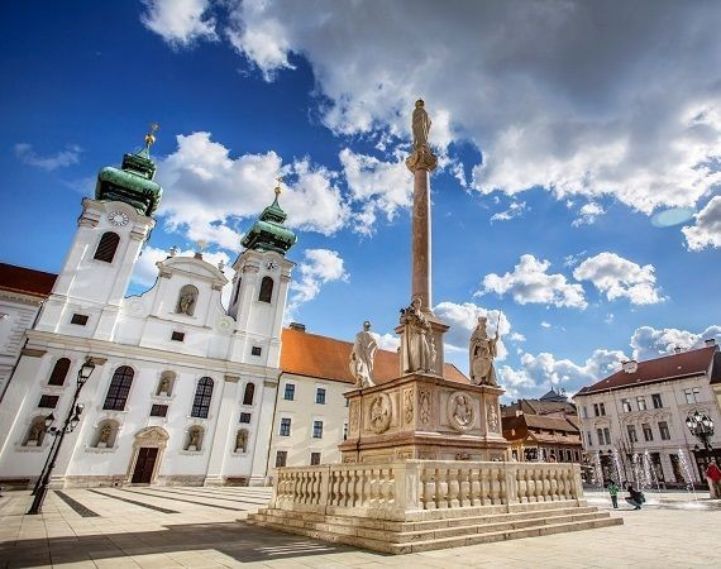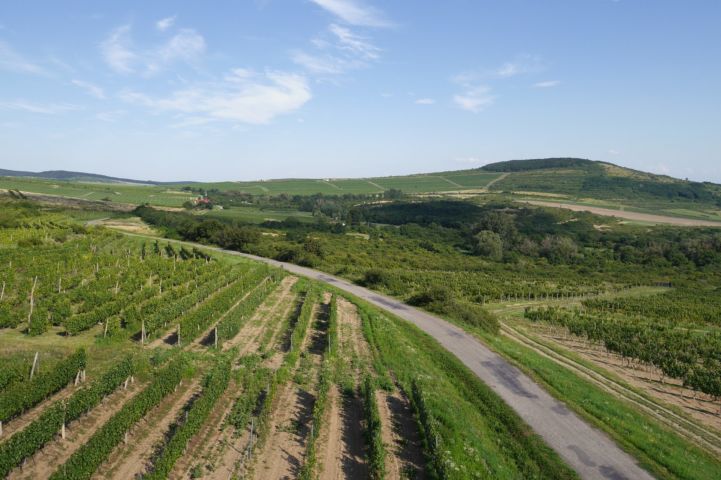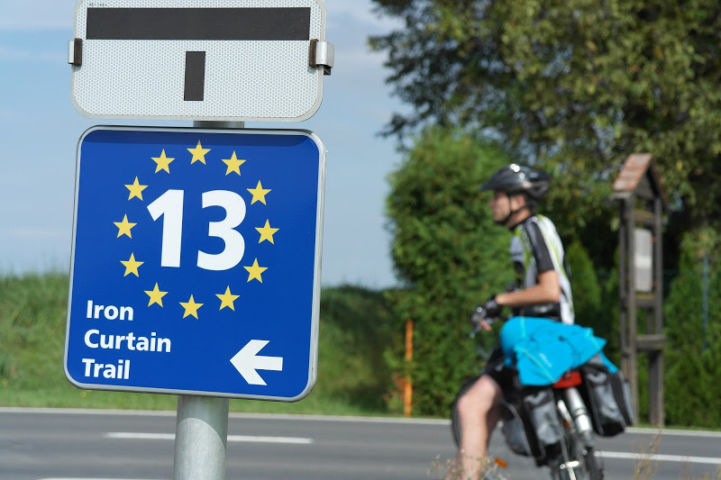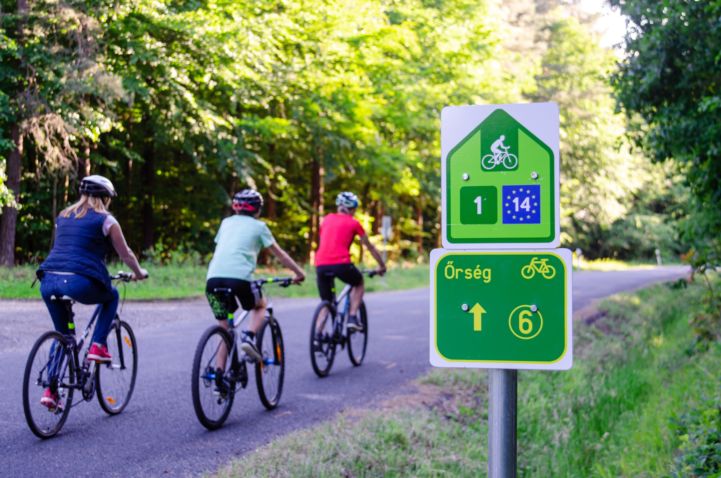New platform for the EuroVelo routes in Hungary!
Managed by the Hungarian Cycling Tourism Association Maketusz, the website focuses on the Hungarian sections of these routes, providing a suggested division into daily sections. Each daily section has its specific page on the website, which includes detailed information useful for planning a cycling trip:
- Level of development of the route (see this page for more information on the categories of EuroVelo routes);
- Elevation profile of the section;
- Highlights along the itinerary, such as UNESCO World Heritage Sites, cultural or natural heritage, or culinary specialties to try;
- Train stations, bus stations and mobility information centres along the way, for an easy access to the route via public transport;
- And a link to download the GPS tracks of the daily section in the page’s description.
EuroVelo.hu furthermore includes links to downloadable smartphone apps to navigate the routes, as well as maps and guides that can be either downloaded or purchased. You will find a small selection of bookable offers if you would rather opt for a guided or self-guided cycling tour in Hungary, without the hassle of organising the trip yourself.
Find out more below about the Hungarian sections of the EuroVelo network!
EuroVelo 6 – Atlantic-Black Sea

EuroVelo 6 connects the Atlantic Ocean with the Black Sea along no less than 6 European rivers spanning the whole continent. In Hungary, it follows a 500-km stretch along the Danube, visiting the capital city of Budapest along the way, one of the most popular sections of the entire EuroVelo network. On EuroVelo.hu you will find a proposed division of the route into 9 daily sections, which are all well developed and signed with EuroVelo signs.
This stretch of the Danube route doesn’t have big elevation differences and visits many cultural sites and major towns. From the Austrian-Slovakia-Hungarian three-countries border point, it continues along the Slovakian border and crosses the fabulous baroque city centre of Győr, close to Fort Monostor – the biggest Central-European fortress of modern history. It then turns southwards along the old Duna-Ipoly National Park and reaches Budapest, the city of thermal spas, also called Pearl of the Danube.
After admiring the panorama of Budapest’s inner city riverbanks, a UNESCO World Heritage site, the route will bring you further south towards Croatia and Serbia. Taste some local wine at the cellars of Meleg-hegy, try the Hungarian fisherman’s soup Halászlé and visit the Gemenc Forest – one of the biggest wilderness reserves in Hungary – until you reach Mohács, last Hungarian town along EuroVelo 6. It is famous for hosting the Busójárás, a local festival that was included on the UNESCO's list of Cultural and Spiritual Heritage. If you choose to cycle EuroVelo 6 – Atlantic-Black Sea in Hungary, you can download The Danube Route smartphone app (Android, iOS). Based on the data collected during the EuroVelo 6 route assessment, this app will provide you with lots of useful information, both for planning and riding the route.
EuroVelo 11 – East Europe Route

EuroVelo 11 is a well-developed, 500 km-long route in Hungary. It is even signed with EuroVelo signs between Sárospatak and Tokaj and between Kisköre and Szeged, at the Serbian border.
Starting at the Slovakian border, the route crosses the Zemplén mountains before reaching the Bogrod river, flowing into the Tisza, one of the main rivers in Central and Eastern Europe, at Tokaj. Tokaj is also famous for its Wine Region, listed as a protected cultural landscape by the UNESCO World Heritage Committee in 2002.
EuroVelo 11 continues along the Tisza, going along the huge Lake Tisza, until Szeged. Make sure to stop in Kisköre at the south of Lake Tisza, with its sandy beach and shallow warm water. Towards the city of Szeged, the route crosses the Ópusztaszer National Heritage Park, an open-air museum about the Hungarian history. From Szeged to the Hungarian - Serbian border, EuroVelo 11 connects to EuroVelo 13.
EuroVelo 13 – Iron Curtain Trail

EuroVelo 13 in Hungary is also just under 500 km long. There are two sections of the route in Hungary: it goes initially from Fertőújlak to Letenye along the Austrian and Slovenian borders, and then, after a stretch in Croatia, from Barcs to Szeged along the Croatian and Serbian borders.The route is well developed and signed with EuroVelo signs until Mohács, while the last stretch is still under development.
The Iron Curtain Trail visits many areas that are reminders of the Iron Curtain’s history, such as the Pan-European picnic park on the Austrian-Hungarian border, not far from the Hungarian city of Sopron. There, you can admire several monuments commemorating the Pan-European Picnic peace demonstration which took place on 19th August 1989. On that day, the Iron Curtain was opened for three hours and 600 East German took this opportunity to flee to the West.
At the border between Hungary and Croatia, the fortification system that has been used over decades as a defense line against Yugoslavia is presented, and you can visit the bunkers between Paka and Szécsisziget, which are linked with a path. From Barcs, the route follows the Drava River until Szaporca, which hosts the Ancient Drava Visitors’ Centre. Stop at Szentborbás or Drávasztára for direct access to the river, boat renting and riverside camping sites. EuroVelo 13 then continues across the Villány-Siklós region, famous for its red wines, to Mohács at the Danube. The last sections of the route follow the Serbian border with a foray into Serbia, visiting interesting natural landscapes such as the protected salt-lake of Bácsalmás, the Upper Bácska and the Homokhát Nature Park near Tompa.
EuroVelo 14 – Waters of Central Europe

EuroVelo 14 was launched earlier this month as the 17th route of the EuroVelo network. The route is well developed and signed with EuroVelo signs from the Austrian border to Velence. The Hungarian section totals 300 km of cycling routes.
The whole route is located close to water, providing a refreshing holiday experience. After crossing Őrség National Park, it goes along the whole length of Lake Balaton, the largest freshwater lake in Central Europe, closely followed by Lake Velence, one of the warmest lakes in Europe because of its shallowness and the sunny climate of the area. Its temperature may reach 26 to 28°C in the summer!
Hungary is awaiting you this summer! So hop on your bike and #RestartCycleTourism by discovering this country rich in natural and cultural heritage.
Author(s): Florence Grégoire